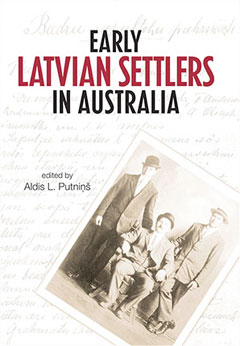An official signature drive that could lead to a constitutional amendment making the state language the only one to be used in government-sponsored schools is under way in Latvia and in Latvian communities abroad.
The petition campaign began May 11 and will continue until June 9. The collection of signatures is organized by the Central Election Commission in Rīga.
The commission on April 11 ordered the campaign after confirming that the National Alliance (Nacionālā apvienība “Visu Latvijai!” – “Tēvzemei un Brīvībai/LNNK”) had obtained at least 10,000 signatures supporting the constitutonal amendment. The conservative political association started collecting signatures last year in an effort to convince lawmakers that Latvian should be the only language of instruction in public schools.
If by June 9 at least 153,232 eligible voters—a tenth of all those who cast ballots in the last Saeima election—sign the petition, then the Saeima would be asked to consider a bill that would amend the Latvian constitution. Specifically, the bill would change Section 112, which gives all people in Latvia the right to an education. According to current wording of the section, the state guarantees education at the primary and secondary levels. The amendent would add that the guarantee extends to education in the state language, which is Latvian.
Additional language in the bill would require the change to take effect by Sept. 1, 2012.
However, if the Saeima rejects the amendment or alters the bill, then a national referendum on the issue would be called.
In Latvia, a total of 622 stations will operate where eligible voters may sign the petition.
Abroad, 45 stations have been established, according to the Central Election Commission. They include the Latvian embassies in Beijing, Berlin, London, Paris, Moscow, Ottawa and Washington, D.C., as well as in Vienna, Austria; Baku, Azerbaijan; Minsk, Belarus; Brussels, Belgium; Prague, Czech Republic; Copenhagen, Denmark; Cairo, Egypt; Tallinn, Estonia; Helsinki, Finland; Tbilisi, Georgia; Athens, Greece; Budapest, Hungary; Dublin, Ireland; Tel Aviv, Israel; Rome, Italy; Astana, Kazakhstan; Vilnius, Lithuania; The Hague, Netherlands; Oslo, Norway; Warsaw, Poland; Lisbon, Portugal; Ljubljana, Slovenia; Madrid, Spain; Stockholm, Sweden; Ankara, Turkey; Kiev, Ukraine; and Tashkent, Uzbekistan.
Also on the list are the Latvian consulates, consulates general and honorary consulates in Adelaide, Melbourne, Perth and Sydney, Australia, as well as the Latvian House in Brisbane; Vitebsk, Belarus; Santiago, Chile; Sao Paulo, Brazil; Kaliningrad, Pskov and St. Petersburg, Russia.
The complete list, including addresses and hours, is available as Microsoft Excel spreadsheet file from the election commission’s website, www.cvk.lv.
More things to sign
Voters who wait for a week will have the opportunity to sign another petition.
From May 18 to June 16, a signature campaign will take place about three recently approved laws that would have continued caps on various welfare payments to Latvia’s residents, according to the Central Election Commission. President Valdis Zatlers was forced to suspend the laws on April 19 after 37 opposition members of parliament asked him to do so.
Under Latvia’s constitution, if more than a third of Saeima deputies asked for a law to be suspended, the president must oblige them. An official petition drive follows and if the signatures of at least 10 percent of eligible voters are gathered, the suspended law is put to a national referendum.
However, if not enough signatures are recorded, then the president must publish the law.
The three laws are part of the government’s budget cutting effort and would extend restrictions on a variety of welfare payments, including the maternity allowance and jobless benefits.




